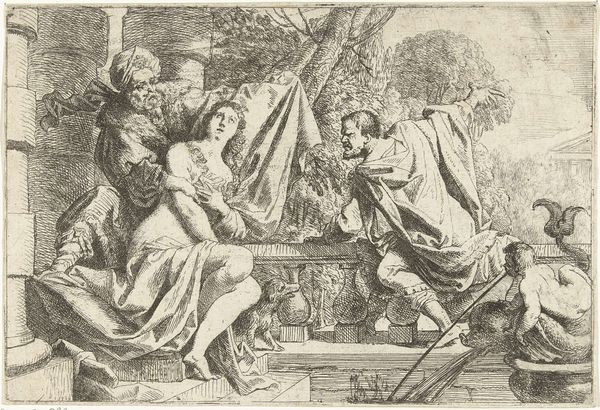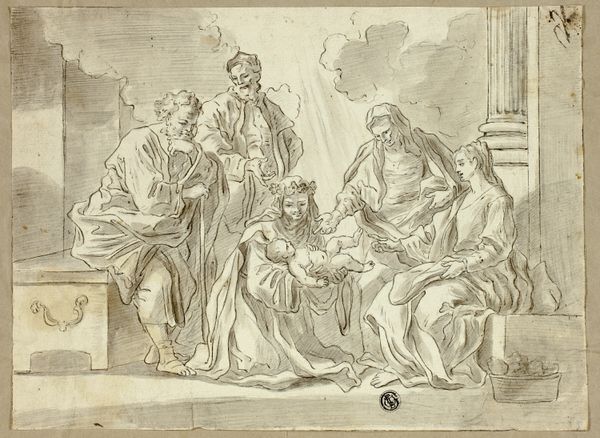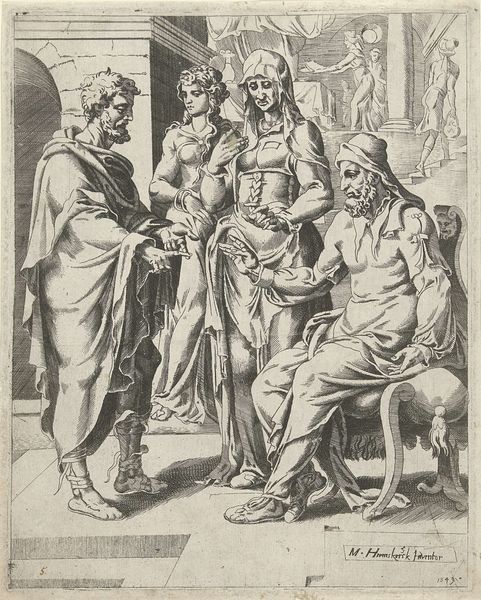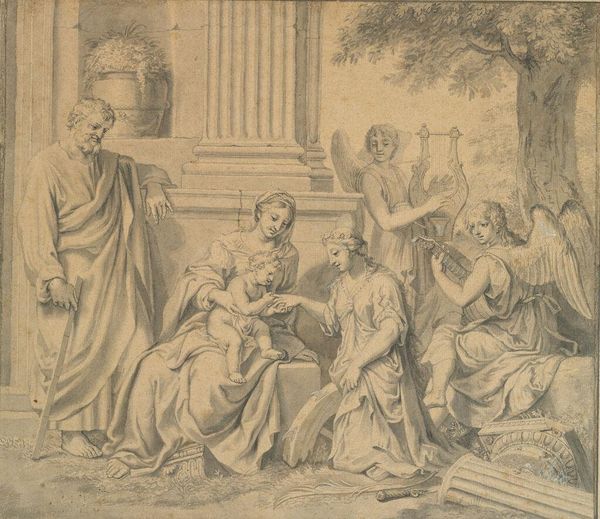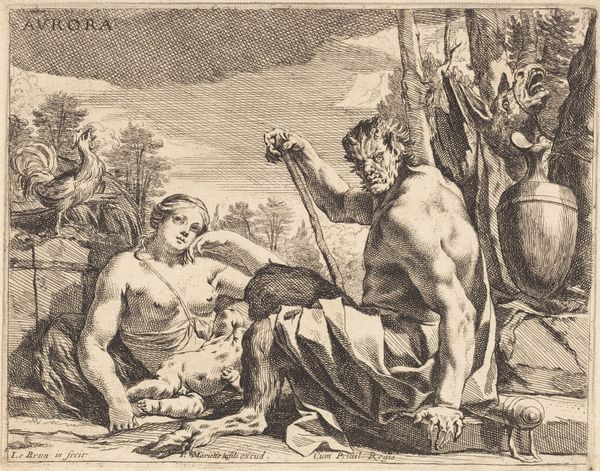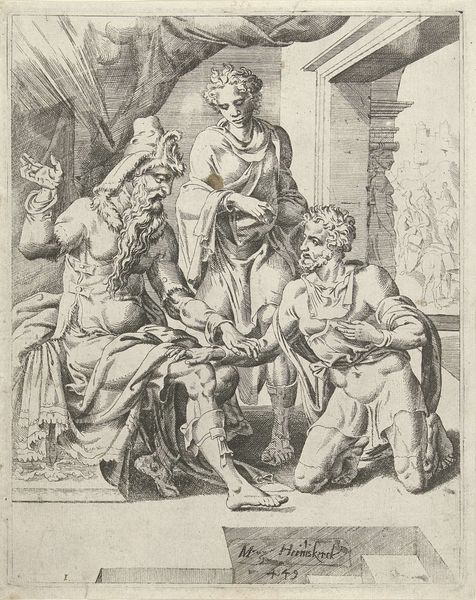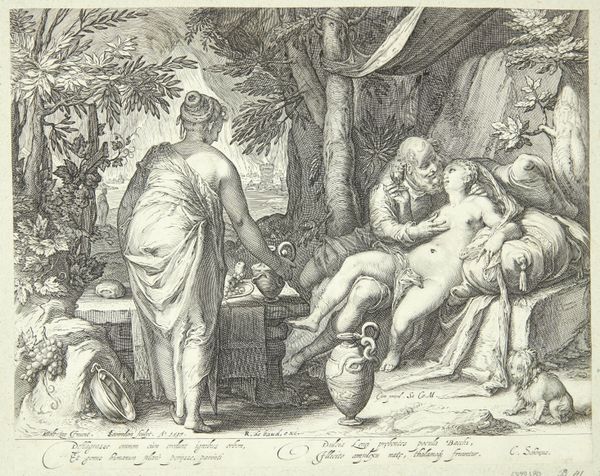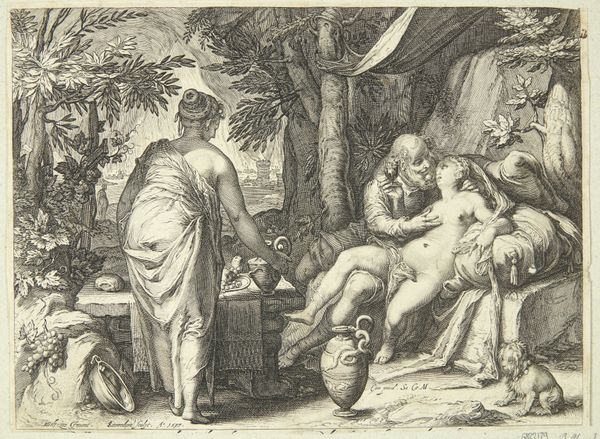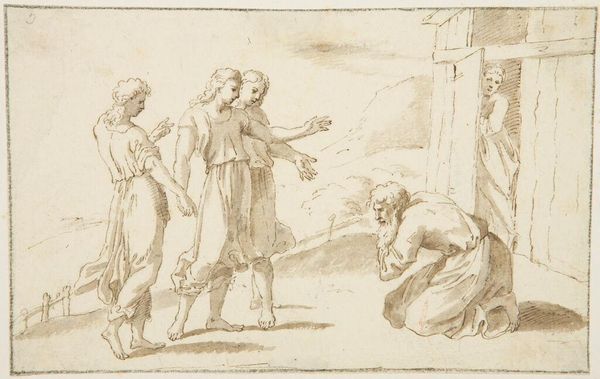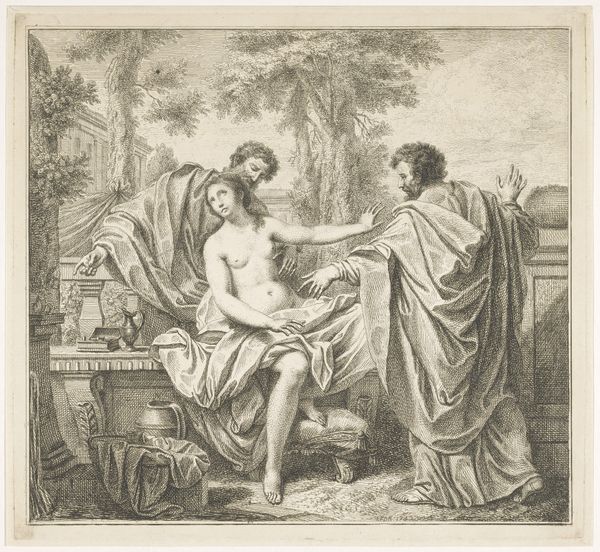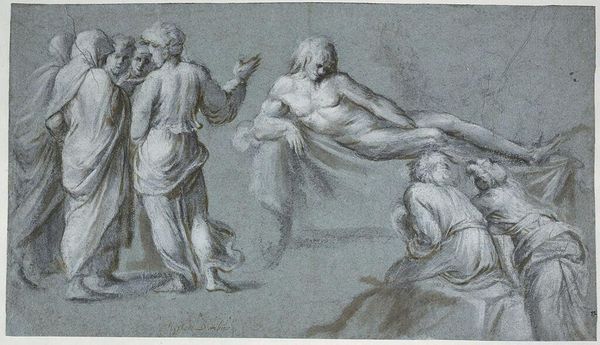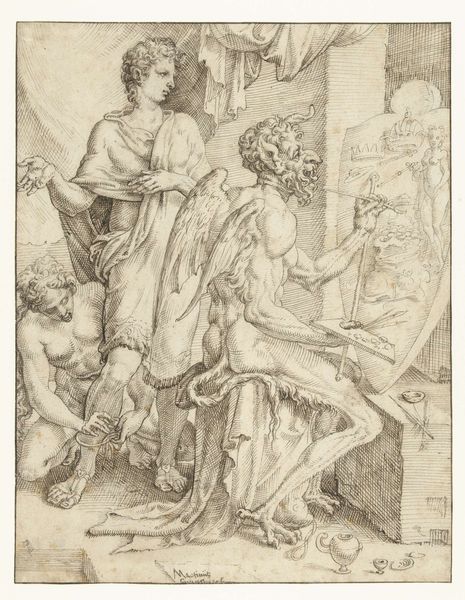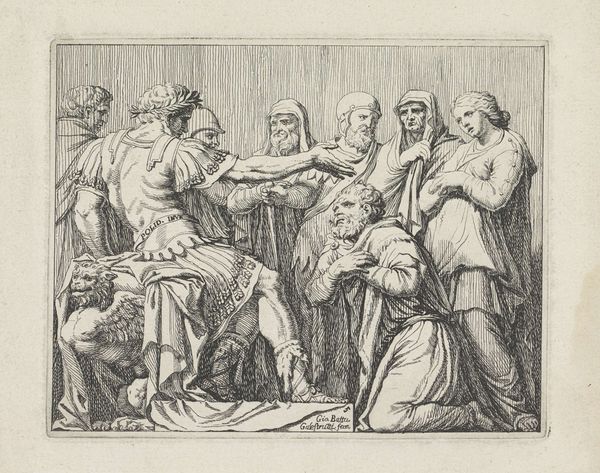
drawing, ink
#
pencil drawn
#
drawing
#
allegory
#
baroque
#
charcoal drawing
#
figuration
#
ink
#
pencil drawing
#
history-painting
Copyright: Public Domain: Artvee
Curator: This drawing, attributed to Gerard de Lairesse and dating from the mid-17th to early 18th century, is entitled "Allegory of Fecundity." It is rendered in ink, resulting in a compelling level of detail. Editor: My initial response is one of raw emotion. The lines seem to vibrate with a certain urgency, depicting scenes of submission, support, and perhaps the very bounty implied by its name. Curator: Note the meticulous execution within this seemingly straightforward ink drawing. Consider the cultural capital inherent in de Lairesse’s mastery, allowing for efficient image reproduction, shaping social and political discourse in its time. The dissemination of ideas was directly tied to such reproductive techniques. Editor: Absolutely. Observe the figures. We see the imagery of supplication and acceptance through gesture, offering a classical, humanist narrative through poses like hand-holding and genuflecting that speaks to both the earthly and divine right, echoing back to ancient Roman and Greek ideals. Curator: Right, the linear hatching certainly defines mass and texture with economy, something to appreciate as the labor and skill here is self-evident. It bridges that liminal zone between ‘high’ art and reproducible craft. Editor: And consider the symbolism inherent to ‘fecundity.’ Not just in overt references like the bowl overflowing with fruits and crops, but in the narrative unfolding: perhaps a ritual cleansing, the blessing upon future yields. What do you suppose was the work that came of this initial artistic intention? Curator: Perhaps, it served as preparatory material. Or it circulated among collectors as examples of artist ingenuity. But even as an allegory, such images are embedded in economics; materials from pen and ink had to be acquired. And who commissioned and benefited from this symbol being circulated? Editor: You remind us that these figures were produced within—and perpetuate—socio-economic structures. My focus remains on the transmission of meaning: how iconographies evolve and what those shared symbols represent to us today. Curator: Very good point, which serves as a reminder that every line drawn manifests both skillful labor and underlying structure of economy of cultural production. Editor: Precisely, leaving us with fertile ground for interpreting this artwork’s ongoing resonances.
Comments
No comments
Be the first to comment and join the conversation on the ultimate creative platform.
